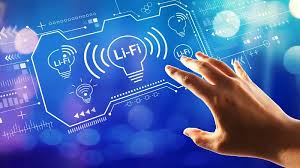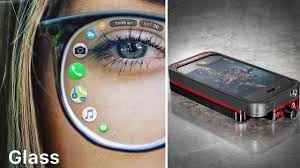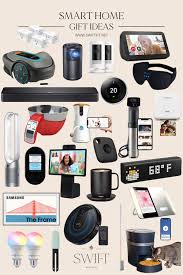
Unlocking the Potential of Li-Fi Technology: A Brighter Future for Wireless Communication
The Future of Wireless Communication: Li-Fi Technology
Imagine a world where internet connectivity is not limited by the reach of Wi-Fi signals but instead travels through light. This vision is becoming a reality with the emergence of Li-Fi technology.
Li-Fi, short for Light Fidelity, is a wireless communication technology that uses light to transmit data. Developed as an alternative to traditional radio frequency (RF) communication technologies like Wi-Fi, Li-Fi offers several advantages that could revolutionize the way we connect to the internet.
One of the key benefits of Li-Fi is its speed. With data transmission rates that can reach up to 100 times faster than Wi-Fi, Li-Fi has the potential to significantly enhance internet connectivity in various settings, from homes and offices to public spaces and even vehicles.
Additionally, Li-Fi is more secure than Wi-Fi since light cannot penetrate through walls, making it less susceptible to hacking or interference from external sources. This makes Li-Fi an attractive option for environments where data security is paramount.
Furthermore, Li-Fi technology is also more energy-efficient compared to Wi-Fi, as it utilizes LED lights for both illumination and data transmission. This dual-purpose functionality not only reduces energy consumption but also contributes to sustainability efforts in building infrastructure.
Although still in its early stages of development and deployment, Li-Fi technology holds great promise for the future of wireless communication. As researchers continue to explore its capabilities and refine its implementation, we can expect to see Li-Fi playing an increasingly significant role in shaping our connected world.
6 Essential Tips for Implementing Li-Fi Technology Successfully
- Li-Fi uses light to transmit data, providing a faster and more secure alternative to Wi-Fi.
- Ensure there is a clear line of sight between the Li-Fi transmitter and receiver for optimal performance.
- Li-Fi can be easily integrated with existing LED lighting infrastructure, making it cost-effective to deploy.
- Avoid interference from other light sources to maintain the integrity of the Li-Fi signal.
- Consider the range limitations of Li-Fi technology when planning its implementation in a space.
- Explore potential applications of Li-Fi in environments where Wi-Fi may not be suitable, such as hospitals or aircraft.
Li-Fi uses light to transmit data, providing a faster and more secure alternative to Wi-Fi.
Li-Fi technology harnesses light to transmit data, offering a faster and more secure alternative to traditional Wi-Fi networks. By utilizing light waves for communication, Li-Fi boasts significantly higher data transmission speeds and enhanced security measures compared to Wi-Fi. This innovative approach not only accelerates internet connectivity but also reduces the risk of external interference, making Li-Fi a promising solution for environments where speed and data protection are top priorities.
Ensure there is a clear line of sight between the Li-Fi transmitter and receiver for optimal performance.
To maximize the performance of Li-Fi technology, it is crucial to maintain a clear line of sight between the transmitter and receiver. Unobstructed visibility between the two components ensures that the light signals carrying data can travel efficiently and effectively, minimizing potential disruptions or signal interference. By prioritizing a clear line of sight, users can optimize the reliability and speed of their Li-Fi connection, enhancing their overall wireless communication experience.
Li-Fi can be easily integrated with existing LED lighting infrastructure, making it cost-effective to deploy.
Li-Fi technology offers a cost-effective solution for wireless communication by seamlessly integrating with existing LED lighting infrastructure. This compatibility allows for a straightforward and efficient deployment of Li-Fi systems, leveraging the widespread adoption of LED lighting in various settings. By utilizing the same infrastructure for both illumination and data transmission, organizations can benefit from reduced implementation costs while enjoying the advantages of high-speed and secure wireless connectivity provided by Li-Fi technology.
Avoid interference from other light sources to maintain the integrity of the Li-Fi signal.
To ensure the reliability and efficiency of Li-Fi technology, it is crucial to avoid interference from other light sources. Maintaining the integrity of the Li-Fi signal requires a controlled environment where external light sources do not disrupt the data transmission process. By minimizing interference, users can optimize the performance of Li-Fi technology and experience seamless connectivity without compromising speed or security.
Consider the range limitations of Li-Fi technology when planning its implementation in a space.
When incorporating Li-Fi technology into a space, it is crucial to consider its range limitations during the planning phase. Unlike traditional Wi-Fi signals that can penetrate walls and travel over longer distances, Li-Fi relies on light signals, which have more restricted coverage. Therefore, understanding the range constraints of Li-Fi is essential for optimizing its implementation within a specific area. By strategically placing Li-Fi transmitters and receivers to ensure adequate coverage and signal strength, businesses and organizations can effectively leverage the benefits of this innovative technology while mitigating potential connectivity issues due to range limitations.
Explore potential applications of Li-Fi in environments where Wi-Fi may not be suitable, such as hospitals or aircraft.
Li-Fi technology offers exciting possibilities for applications in environments where traditional Wi-Fi signals may not be ideal, such as hospitals or aircraft. In settings where data security, speed, and reliability are crucial, Li-Fi can provide a valuable alternative by utilizing light for data transmission. Hospitals could benefit from the secure and interference-free nature of Li-Fi for transmitting sensitive medical information, while aircraft could leverage its high-speed capabilities to enhance in-flight connectivity for passengers and crew. Exploring the potential applications of Li-Fi in these specialized environments showcases the versatility and adaptability of this innovative wireless communication technology.



